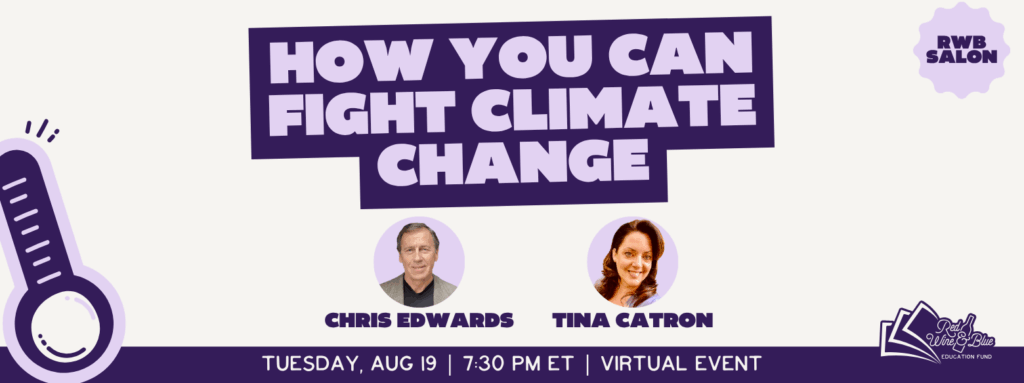
Hi there! Welcome to Easy A–Your go-to source for quick and easy actions you can take in five minutes or less about the issues you care about.
Are you a busy mom? Or maybe your work is so hectic you can’t think about anything else during the day? A lot of us are also taking care of parents or other loved ones too, leaving little time for anything else.
The good news is that these are things you can do while you’re waiting in the school pick up line, on your lunch break, or even at your kid’s soccer practice – anywhere you happen to be! And you can easily share Easy A with your friends so they can be in the know, too! We’ll send you a new action to take every week–just one, we promise –and it will always be something you can do in five minutes or less. Ready to get started? Let’s go!
Read This: Dear 2026
The end of 2025 is in sight, and for a lot of us, that is cause for celebration!
The year started with the inauguration of the Trump administration, and from day one, they took actions that harmed average Americans. From dismantling the Department of Education, to enacting tariffs that raised the prices of our everyday goods, to shutting down diversity and inclusion efforts everywhere, to snatching our neighbors right out of their homes and workplaces – they made much of 2025 a total dumpster fire.
So maybe you’re celebrating the END of this painful year, but believe it or not, there are also some good things that happened. We want to celebrate those, too.
It would’ve been easy to give up in January and just try to get by, but we refused. Instead, we started the year with our historian friends Heather Cox Richardson and Timothy Snyder who inspired us to not give in to extremism, and to go local to protect democracy instead. In doing so, we accomplished some pretty amazing things:
- Our membership grew by over 190,000 people!
- TroubleNation exploded to more than 800 local groups!
- We launched our new RWB App and more than 29,000 of you are already using it!
- We celebrated incredible election wins in November that set the stage for an even better 2026.
So if we take away one main lesson from 2025, it’s that if we stick together, hold onto hope and joy, and keep going, we can do great things!
Now we’re kicking off our most fun and forward-looking year-end celebration ever, and for the next few weeks, we want you to join us!
We’re not just saying “good riddance” to a year filled with mostly crappy things, we’re celebrating how we turned it around and have lots to look forward to in 2026.
A new year offers us endless possibilities. We’re taking this time to reflect and plan, and that’s where our Dear 2026 campaign comes in. We’re writing letters to our future selves, celebrating the work of intrepid women with our first ever Troubbies awards, and donating to support more women’s democracy-saving work next year.
But to kick things off, we’re starting with a little fun. We designed this special deck of tarot cards to give you some insight into what your 2026 with Red Wine & Blue holds. Give the deck a shuffle, pull the card you’re most drawn to, and see what special message you receive for 2026.
Then, if you have a little extra time, click here to head on over to our Dear 2026 campaign page to learn about the rest of our year-end celebrations and our intentions for an amazing year ahead. And feel free to share with friends!


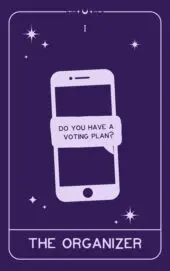

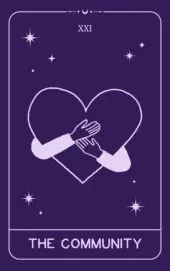





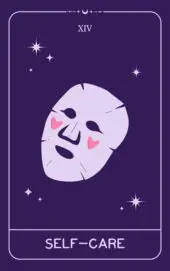
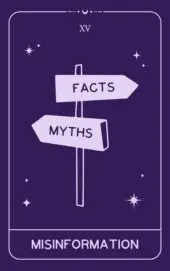

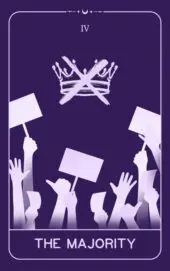
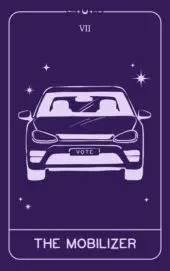
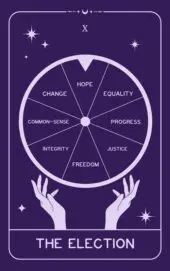


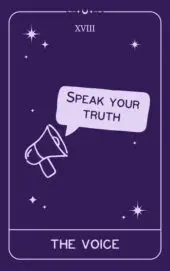
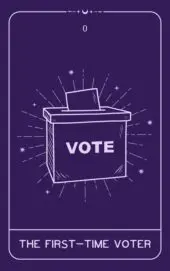


*Note, this is all for fun and entertainment! We aren’t tarot experts and we can’t predict the future, but we know one thing’s for sure – we’ll keep fighting extremism in 2026 and we want you with us!
Watch This: Learn How to Spot Soft Censorship
A lot of people are talking about freedom of speech right now. As Americans, it’s a right that has always defined us and that we all hold dear. That’s why the majority of us oppose book bans and censorship.
The rise in book bans over the past few years has been well documented, but it’s also important to understand the many other ways that censorship can occur. Watch this short video to learn more about what soft censorship is and how to spot it.
With this information, you’ll be ready to take action if the right to speak or read is threatened in your local libraries. And we’ve got your back!
Read This: The Quiet Danger of Soft Censorship
We’ve been fighting the explosion of book bans since Red Wine & Blue started. PEN America reports 16,000 book bans in public schools since 2021 — a level not seen since the 1950s during McCarthyism. This increase has been driven by organized groups with a political agenda — and lately even by the White House. They want to remove books because they don’t like the truth the stories tell, the characters they feature, or the personal identities of their authors.
But the American Library Association shows a slowing of reported book bans in the last year, so is it time to celebrate? It’s actually a little more complicated than that. This decline might be due to successful legal challenges to book bans, which is good news. But it’s also likely due to an increase in soft censorship.
What is Soft Censorship?
Soft, or quiet, censorship can come in many forms, but in general it’s defined as removing a work without officially banning it. Here are some examples:
- An organized group coordinates to check out all the books they don’t like for as long as possible so that they are never available for the people who actually want to read them. (Yes, people are actually doing this!)
- Books are quietly removed from shelves during a routine process called “weeding” which is normally used to remove books that are damaged, outdated, or no longer in demand.
- Books are purposefully not ordered or added to a collection because they are known to have been challenged elsewhere.
- Books are moved to age-restricted areas of the library or removed from public displays, even if they are written for younger audiences.
- Entire shelves or libraries are closed off while large reviews take place for extended or indefinite amounts of time.
- Book bans and challenges simply go underreported to the organizations that are tracking them, either because librarians and teachers have been silenced by fear or have left their jobs altogether in the face of unprecedented public scrutiny and attacks, or because the local news outlets that cover this issue are dwindling.
Censorship is wrong, whether it’s loud or quiet. It’s a violation of our freedom to read, speak, think critically, and be given equal legal protection. It’s also bad for our kids and our communities. Censoring or banning books keeps us from understanding ourselves and the world around us and it takes teachable moments away from our families.
Not to mention the fact that it’s expensive! Just like we found in the Costs of Conflict report, some school districts have spent up to $135,000 a year fighting book bans and soft censorship.
Successfully Fighting Book Bans
There actually is some good news in all of this. Recent surveys show that up to three quarters of Americans oppose book bans and trust librarians and teachers to provide appropriate reading materials. And standing up to book banning extremists works. We’re seeing people fight back in places like Idaho, South Carolina, and Tennessee. At least 12 states have already passed laws to protect the right to read and give legal protections to librarians.
So what can you do about it where you live? You can start by paying attention to what’s happening in your local public schools and libraries. Attend school board and library board meetings. Read district and school newsletters and other communications. Have a library card and participate in library and school programs. Get to know your local teachers, librarians, and their collections. Let them know that you have their back!
You can also pay attention to your state legislature. The organization Every Library tracks bills that threaten our right to read as well as bills that support libraries, so you can see what is happening in your state. If bills are being considered, visit your state legislature’s website to see if you can sign up for bill tracking alerts.
All of this will help you to be ready to speak up and fight back if any form of banning shows up in your community. We’ll cover more easy actions you can take to fight soft censorship in the coming weeks.
Do This: Start Talking About Racism
Anti-racism is not just a state of mind, it’s an active way of living our day-to-day lives. It’s the intentional practice of taking ongoing steps to confront racism in an effort to end it.
Sometimes that might mean calling out overt examples of racism when we see them, which can be uncomfortable and maybe even a little scary. But it can also mean just starting conversations with friends and family to share what we’ve learned. So now that you’ve started learning about anti-racism, let’s take an easy action!
Earn your Easy A this week by sharing our anti-racism resources on your social media or by text message. This is a great way to introduce some new information to people you know and start a conversation. Our pre-made social media posts make it super easy to do. Just click on the post of your choice below to get started.
And remember, this is just the beginning of the ongoing work we need to do to create the anti-racist America we want for everyone. But that’s totally achievable if we take actions like this every day!
Watch This: What Can We Do About Racism?
As we take on the work of anti-racism, we’ll probably run into friends and family who have varying degrees of understanding about it.
Some may have their own deeply personal experiences with racism. Their stories are important and can teach us valuable lessons. But some may not understand why we’re even talking about racism, thinking it’s a thing of the past. And some may be doing or saying racist things without even realizing it.
No matter what our experiences are — or theirs — it’s important to have open, honest conversations, even if they’re difficult. Find out why in this one minute video about racism and what we can do to stop it:
This is the ongoing work we have to do to truly end racism in America.
Read This: Anti-Racism, It’s More Than Any Of Us Think
None of us want to think of ourselves as racist, and it’s true that we don’t intend to be. But saying (and believing) that we’re “not racist” is not enough to tackle the very real problem of racism in America. We need to be anti-racist. But what exactly does that mean?
WHAT IS ANTI-RACISM?
It can be tough to talk about racism, let alone call it out, but that’s exactly what we have to do if we’re ever going to end it. We have to be willing to learn, speak honestly, and work intentionally to confront racism when we see it. And that is what anti-racism is — the active practice of opposing racism and working intentionally to confront and stop it. That includes stepping outside of our comfort zones, speaking up, having difficult conversations, and calling out examples of racism when we see them.
WHY DO WE NEED ANTI-RACISM?
When America was founded, there was a prevailing belief that white people were better than others and should hold all the power. The most obvious example of racism — slavery — began in the colonies well before we even became a country, and it lasted almost 250 years. As the social, economic, and political systems of America were created, they were shaped by that racism.
What some people don’t realize is that a system rooted in white supremacy hurts everyone, including white people. For example, after desegregation, many communities (led by white decision makers) chose to drain and completely close their public swimming pools rather than share them with Black families. Everyone lost something in that scenario.
It might be tempting to think that because slavery ended, and because the Civil Rights Era brought about progress, and because we elected our first Black President and Vice President, that racism isn’t a problem anymore, but that simply isn’t true.
After slavery ended, racist laws and codes persisted. Segregation kept education, shopping, travel, and dining, among other things, separate and unequal. These centuries of inequality kept Black Americans from equal opportunities to gain education, work high-paying professional jobs and get associated benefits like healthcare, own land and homes, and build wealth. The resulting gaps in equal representation in all these areas exist to this day.
Now of course, a lot of important progress was made during the Civil Rights Movement, but it didn’t magically erase racism from society. In fact, extremists are trying to reverse that progress now by eliminating diversity, equity, and inclusion programs, ending federal civil rights investigations, banning books written by or about Black and brown people, cutting funding for minority-focused healthcare research and environmental justice, conducting mass deportations of immigrants, and more. They are taking us back in time!
This is why we need anti-racism. Racism won’t go away just because some individuals aren’t racist. We have to do intentional work to fight it.
DOING THE WORK OF ANTI-RACISM
We shared some typical examples above, but racism and imbalances of power in our culture sometimes exist in ways we don’t even notice. It even influences our own behavior whether we realize it or not.
We have to start looking at the world around us in new ways. And it’s not just about calling out overt examples of racism, like someone using a racial slur. It’s also about looking for ingrained biases and imbalances of power that may (even sometimes unintentionally) be perpetuating racism. Like noticing if the hair policies on our kids’ sports teams disproportionately impact traditionally Black hairstyles. Or noticing if our Homeowner’s Association rules disproportionately affect a minority population. Or recognizing that a proposed voter ID law in our state will harm voters of color more than white voters. Practicing anti-racism means that once we see things like this, we speak out and stop them.
Being anti-racist takes a lot of learning and a lot of intentional effort. We recently launched a new webpage that has some introductory resources for anyone looking to start or level up their anti-racism work. Over the next few weeks, we’ll share even more!
Do This: Join the Red Wine & Blue App!
For the past few weeks, Easy A has celebrated women, past and present, who organize for the greater good in their communities. These women have shown us how we can all do our part to change the world.
This week, we’re excited to announce that Red Wine & Blue has a brand new place for us all to organize like these women and get sh*t done — the Red Wine & Blue App!
Our new app is a place just for our community, free from social media algorithms and rich tech bros who have been increasingly stacked against us. It’s a safe and moderated space that combines community groups (just like Facebook groups) with all our resources, conveniently in one place.
In the app, you can connect with people in your state, share ideas with other RWB members all over the country, and tap into resources like our 160 Ways to Change the World guide. You can also register for our events, get our voting guides, read Easy A, and more. It’s truly everything Red Wine & Blue has to offer — right in your pocket!
So earn your Easy A this week by joining the RWB App! It’s free and all you need to get started is your name and email address. Take a few minutes and download it right now!
You can learn more about the app on our website. We look forward to seeing you there!
Watch This: TroubleNation Women Organizing for Good
Last week, we shined a spotlight on nine women throughout American history who have organized in their communities to help others. There are countless examples of women seeing a problem and taking action to fix it, because that’s what we do! And not just in history — many women are doing it in this moment.
Take a minute — forty seconds, actually — to watch this video about a group of women who are organizing in Prince William County, Virginia. They recently collected 2,300 pounds of food and $5,000 to support local food banks in their community!
Jess Schaer knew that some kids have less access to food during the summer when they’re not in school. She wanted to do something to help, and this was the result! By organizing her group, PWC Women that Wine, and asking others to chip in, she is making a difference.
PWC Women that Wine is one of more than 825 Red Wine & Blue TroubleNation groups who are organizing locally like this. That’s more than 106,850 women! In a time where so much is going on in the world and the weight of it all can feel overwhelming, these women have found that they can best tackle the problems they see by going local.
This is something we all can do with whatever amount of free time we have. Even if we all can’t organize our own group and host events like this food drive, we can support local organizing with donations, volunteering whatever time we have to give, or even just by spreading the word about their efforts on social media. We can all be a part of the beautiful history of women organizing for good.
Read This: A Seriously Brief Timeline of Women Organizing for Good
Throughout history, women have organized and fought for the greater good. Right now, as we witness great injustices and many of our freedoms are at stake, let’s recognize and celebrate some of the American women who showed us what’s possible through local organizing.
Esther de Berdt Reed
In 1780, Esther de Berdt Reed formed the Ladies Association of Philadelphia to support soldiers in the Revolutionary War. She organized dozens of women to go door-to-door raising more than $300,000 from 1,600 individuals! Working with George and Martha Washington to decide how to use the money, the women purchased linen and made much-needed new shirts for the soldiers in the field. Their efforts became a standard for combining social and political activity for good causes in other states.
Harriet Tubman
Harriet Tubman was born into slavery in Maryland. In 1849 she escaped and made it to freedom in Philadelphia, but her family stayed behind. She decided to return to help them and became a “conductor” of the Underground Railroad, building a personal network of abolitionist friends and helpers. In 1854, she succeeded in helping her parents, brothers, and others escape to freedom. In total, she made about 13 trips, helping an estimated 70 people reach freedom in the north.
Ella Baker
Ella Baker, the Executive Secretary for the Southern Christian Leadership Conference (SCLC), was impressed by the student sit-ins during the Civil Rights movement. In 1960, she organized a conference to bring all the student leaders of the sit-in movement together. There, she encouraged the 126 students in attendance to create the Student Nonviolent Coordinating Committee (SNCC). She connected them with each other and with powerful leaders from the NAACP and SCLC. Many Civil Rights leaders grew out of the SNCC and the organization went on to become an important part of the movement.
Dolores Huerta
Dolores Huerta grew up in an agricultural community of diverse, working families in California. As a teacher, she was bothered by the economic injustices faced by her students. This led her to become an organizer with the Stockton Community Service Organization and to found the Agricultural Workers Association. She arranged voter registration drives and advocated for workers’ rights. That’s how she met César E. Chávez and together, in 1962, they started the National Farm Workers Association to help farm workers organize, negotiate for better work contracts and insurance, and secure aid and safer working conditions. At 95 years old, Dolores still travels the country helping working families organize and advocate for themselves.
Heather Booth
Heather Booth was already active in civil rights causes in 1965, before Roe v. Wade, when she formed JANE, a secret abortion service. She organized ten women and even more anonymous volunteers to run JANE. For seven years they helped 11,000 patients get the safe healthcare they needed. Heather never stopped organizing and also founded Midwest Academy, which trains grassroots organizers on how to successfully make positive change in their communities.
Ai-jen Poo
Ai-jen Poo is the daughter of immigrants who volunteered in an Asian women’s shelter and saw the struggles faced by domestic care workers — low pay without benefits, overwork, and workplace violence. She started a campaign to organize domestic workers — mostly immigrants — through the Committee Against Anti-Asian Violence (CAAAV): Organizing Asian Communities. She did true grassroots work, visiting playgrounds, parks, and churches to connect with workers. Since then, through founding other organizations, Ai-jen has continued to fight for better resident care in nursing homes and for improved working conditions for caregivers and domestic workers.
Patrisse Cullors, Alicia Garza, and Opal Tometi
In 2013, George Zimmerman was acquitted of killing 17-year-old Trayvon Martin in Florida. This sparked the creation of the #BlackLivesMatter movement by Patrisse Cullors, Alicia Garza, and Opal Tometi. A year later, after Mike Brown was murdered in Ferguson, MO, the movement spread with more than 600 people gathering in St. Louis to protest. From there, these organizers were determined to help any communities fighting violence against Black people. Initially spreading to 18 more cities, #BlackLivesMatter is now a global movement with a network of support for leaders making a difference in their communities.
All of these women saw an issue they cared deeply about and set out to fix it. And this is obviously a non-exhaustive list! There are countless other women – sung and unsung — who have organized in big and small ways to make a positive difference in their communities and in the lives of others. We are so inspired by all these women and hope you are too!
Do This: Fight the Climate Crisis
Remember learning about the hole in the ozone layer back when we were in school? And that to fix it, we had to stop using aerosol hairspray?
We also learned the importance of recycling to preserve natural resources. And none of us will ever forget to cut through plastic six-pack rings so that animals don’t get caught in them once they are thrown away!
The bottom line is, we know how to take action when there are problems threatening our environment. It’s the same with climate change.
The climate crisis is serious but solvable. Scientists understand it and have given us solutions including solar and wind power; improving transportation, engineering, and architecture; and implementing sustainable farming and land management.
Of course, those are big, systemic changes – not exactly the same as putting newspaper in the recycling bin. But there are also small, individual changes we can each take to help every day — things like planting native pollinators instead of grass in our yards, or eating less meat and dairy.
We’re going to dig deeper into how to fight climate change on August 19 when meteorologist and climate action advocate Chris Edwards returns for another event with us! He’ll be joined by Tina Catron from EDF Action for How You Can Fight Climate Change.
Earn your Easy A today by signing up for this event.
We’ll walk through actionable steps we can take, big and small, to reverse the course of climate change. Remember, if you sign up for our events, we’ll email you a recording afterwards. So even if you can’t make the live event, sign up and watch when your schedule allows!
When Chris joined us for Climate Change 101, he was honest. He said solving the climate crisis is going to be hard, but reminded us that we’ve done hard things before (like giving up that Aqua Net!) and we can do it again. Join us!
Watch This: The Climate Crisis Is a Health Crisis
We’re not doomed yet, but we’ve wasted a lot of time. That’s one of the takeaways we learned from meteorologist and climate change communicator, Chris Edwards, when he joined us recently for our virtual event, Climate Change 101: What You Need to Know.
Chris talked about the science behind climate change and how it affects us all. One of the impacts he discussed echoed what Dr. Alice Chen wrote in your Easy A last week — the climate crisis is also a crisis for our health. Watch what he had to say about the impact of climate change on our health in this short video:
Climate change doesn’t just hurt our bodies, it also hurts the health of animals and ecosystems.
Chris showed us that climate change is simple, serious, and solvable — if we act soon. Next week, we’ll take action together.
If you want to earn extra credit this week, you can watch the full Climate Change 101: What You Need to Know event with Chris here.



